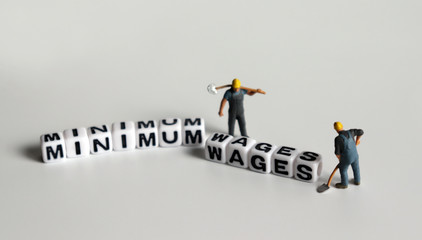The minimum wage is one of the most controversial economic policies in modern times. This explainer explores its history, mechanics, intended goals, and real-world economic impact.
The purchasing power of the federal minimum wage has eroded significantly since 1968. When paired with means-tested public assistance, it traps people in poverty and prevents them from accumulating work experience and on-the-job skills.

Jobs
Raising the minimum wage benefits many low-skilled, limited-experience workers who keep their jobs or find new ones without having their hours cut. It would also help reduce the number of full-time workers who make so little they have to rely on federal safety net programs, paid for with taxpayer dollars.
However, the broader economy may suffer when businesses are forced to offset labor cost increases by cutting back on jobs or hours, raising prices, or closing. That can neutralize or even reverse any perceived boost in consumer spending.
A higher minimum wage also affects the ability of small businesses to hire and expand, especially in industries that rely on thin profit margins such as restaurants. Many of these are owned by women or minorities, who are overrepresented among the lowest-wage earners, and can face discrimination in hiring decisions.
Many employers have found that it is too costly to pay their current workers the new minimum wage or risk having to let them go. This can cause companies to shut down or abandon plans to open new locations. It can also harm consumers who are loyal patrons of local restaurants, stores, or bookshops that have to raise prices to cover their higher labor costs.
Income
Many people who are employed full-time and make less than the minimum wage receive benefits from taxpayers that help them pay for food, housing, and medical care. These benefits are often a substantial portion of their total income.
If workers received higher wages, they would likely spend a larger proportion of their paychecks in the local economy. This could boost community-level economic activity and support local businesses. It could also reduce the amount by which workers subsidize the profits of corporations that pay them low wages. And it might reduce the degree to which companies rely on government subsidies to offset their profit losses.
However, the impact dissipates with larger increases in the minimum wage. This is because raising the price of labor leads to labor surpluses, and employers are unable to hire as many workers as they would otherwise.
It also may lead to the closure of businesses that cannot recoup their increased labor costs, such as small restaurants, book stores, and other small businesses. This could harm consumers, who face lower options for shopping and may have to pay higher prices in the remaining places they do shop. This is particularly a concern for communities that are most reliant on these smaller businesses. It might also harm the economy by reducing the number of people who visit these businesses, which can lead to a loss of local tax revenue.
Taxes
Many of the jobs impacted by raising the minimum wage are low-income jobs, and people who work those positions spend their money locally. So, increasing their wages can boost local economies and reduce poverty. This type of economic growth is not only good for communities but also helps businesses thrive and reduces the need for federal spending.
Some argue that higher wages will cause businesses to lay off workers, but research shows this is false. When wages are increased, businesses tend to hire more employees, not fewer. This is particularly true in industries where the majority of workers are paid less than the minimum wage, such as restaurants and fast-food chains.
Moreover, it is important to note that the price of most goods and services is not affected by the minimum wage. The price of a hamburger may rise by 50 cents, but that’s only a small increase in the overall cost of living. Overall inflation rates are low, and that’s because most products and services are not labor-intensive.
The partisan divide over the minimum wage is not about policy or ideology; it’s about politics and who’s in power. This is why CAP supports raising the minimum wage to $15, and why we worked with a bipartisan group of senators to include it in the COVID-19 crisis relief package.
Spending
With paltry wages, low-wage workers have no way to save for major purchases or weather financial crises. As CAP has documented, this makes them more likely to depend on means-tested public assistance programs to provide the food and health care that they and their families need to survive. CAP research has also shown that increased wages reduce total household debt and help people build credit and savings.
During the pandemic, many of those struggling to get by with minimum wage jobs lost their jobs, and when they did find new ones, they were often paid less. As a result, the number of Americans living below the poverty line has spiked since the beginning of the pandemic.
While much of the economic debate about raising the minimum wage focuses on the minimal benefits to some, it overlooks and underestimates the significant costs and consequences for a large number of businesses, workers, and consumers.
It is important to understand that the impact of a minimum wage depends on how it is implemented and what labor market conditions are like. For example, in markets where employers have a lot of control over wage-setting, increasing the minimum wage can lead to higher unemployment. However, in more competitive markets, where worker bargaining power is stronger, a minimum wage increase can lead to fewer job losses and even higher employment levels.